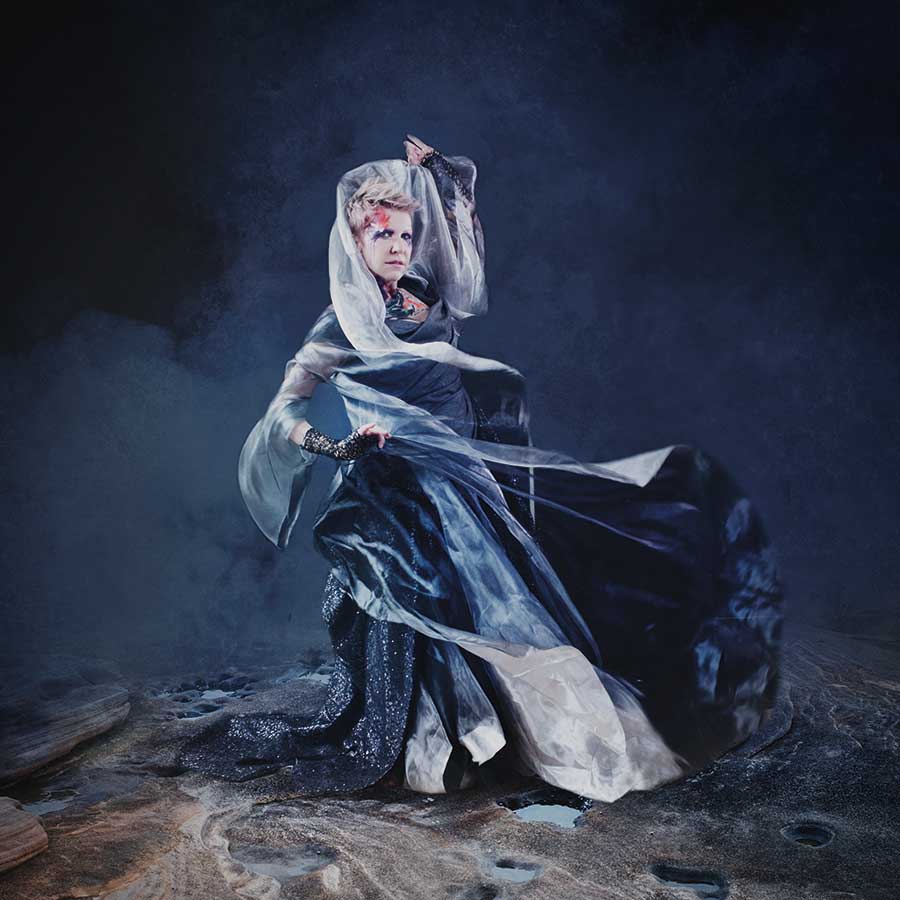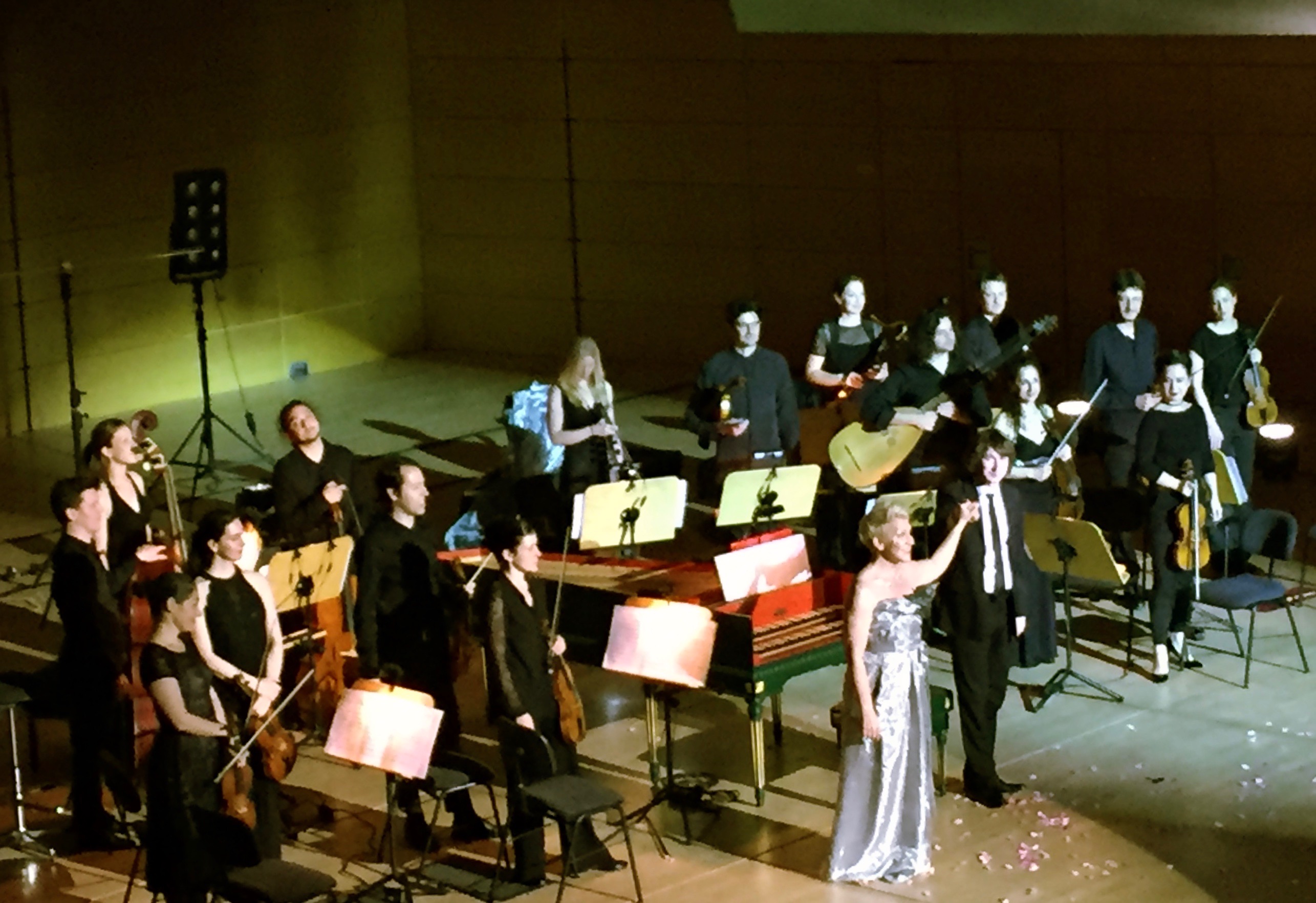Händel Festspiele Halle 2018, 26 May, 2018 Georg-Friedrich Händel Halle
Correct me if I am wrong, but surely the Kansas-born mezzo-soprano Joyce DiDonato is our generation’s biggest opera diva. On top of that a prima donna who doesn’t put on any airs. The opposite is true. She gives a lot of time to good causes and is genuinely interested in working with young singers. She also believes that “Art is a valiant path to peace”. But I struggle to conceal my cynicism when the audience is handed a Hallmark invitation card at the entrance of the concert hall in Halle with a personal greeting from DiDonato. It contains a few thoughts about discord and harmony and the belief that art unifies. And then she poses a question which she hopes that we find time to answer and post in the box provided for that purpose : “…in the midst of chaos, how do you find peace?’ I have to confess that I didn’t fill in an answer. I let DiDonato’s singing do the talking.
On her whirlwind tour to two cities in the former East Germany DiDonato also found time to pick up a couple of awards. Halle is Handel’s birthplace and DiDonato, who is the composer’s foremost interpreter in the US, was given the town’s prestigious Händel-Preis. This price doesn’t include a remuneration, it is simply a mark of distinction. Two days later DiDonato appeared in Dresden (which lies 130 km further east), where another splendid music festival is taking place simultaneously as the Handel festival . The Glashütte Original MusikFestspielPreis (offered by a local watchmaker) does come with a decent sum of money, € 25,000. DiDonato decided to donate the prize money to El Sistema Greece, an organisation that provides regular music education for children who live in refugee camps in Hellas (Greece).
Yes, proof, if needed, that DiDonato is not only an internationally acclaimed opera star, but also has plenty of heart.

The modern Georg-Friedrich-Händel Halle in Halle rarely gets used during the festival (see also my previous blog from the festival). Its capacity is greater than the audience numbers that most of the Händel festival concerts and performances attract. Joyce DiDonato and Il pomo d’oro have no problem filling the large concert and congress hall. People fly from all over the world to see DiDonato perform.
When the audience enters the auditorium the artist is already on stage, albeit in the shadows upstage left and therefore many audience members don’t spot her straight away. She is dressed in clobber designed by Vivienne Westwood but not as heavily made up as she is on the cover of the CD ‘In War and Peace, harmony through music’(2016). Clearly visible in the foreground, and naked from the waist up, sits a dancer on the floor, face down. A low hum can be heard through the sound system. This sets the serious and solemn mood of the concert. Unfortunately the audience starts to clap when the orchestra enters and that upsets the momentum temporarily. DiDonato has together with the film director Ralf Pleger created a kind of Gesamtkunstwerk in which voice, music, dance, costumes and lighting design are meant to come together. I have my doubts about the necessity of this concept. If DiDonato was a lesser singer I would perhaps welcome this approach, but I ‘d rather concentrate on her voice and watch the excellent orchestra than be distracted by a lone dancer and the occasional flickering lighting effects.
The recording of ‘In War and Peace’ features even (out of fifteen arias) by Handel. In this concert she presented in total nine arias and a song (by Richard Strauss and not featured on the album). Six were composed by Handel.
The first half of the concert concentrated on five different heroines who are embroiled in deadly conflicts. The arias all deal in one way or another with war.
In the opening DiDonato flung herself into ‘Scenes of horror, scenes of woe’ aria from Handel’s oratorio Jephtha. The audience luckily cottoned on pretty quickly to the fact that they were not meant to clap after every song. There was a superb , slowly intensifying rendition of Henry Purcell’s ‘When I am laid in earth’. The mezzo-soprano turned this lament a few years ago into a tribute to victims of intolerance and injustice when she performed it in The Stonewall Inn, the famous gay bar in Greenwich Village.
Sitting on the stage she finished the first half of the concert with a very fine, pianissimo and lentissimo rendition of ‘Lascia, ch’io pianga mia cruda sorte’ (from the opera Rinaldo).

Throughout the concert Il pomo d’oro performed a number of instrumentals to allow DiDonato’s voice some rest in between arias. This was an opportunity for the orchestra (and the dancer) to shine. Il pomo d’oro play on period instruments and they mainly specialise in opera. Emilio de Cavalieri considered that his work Rappresentatione di anima, et di corpo (1600) was the very first opera and that was reason enough for the ensemble to give us the sinfonia from that work.
The young Russian Maxim Emelyanychev, who next year will become the Scottish Chamber Orchestra’s principal conductor, put Il pomo d’oro through its paces. Maxim conducts with gusto, occasionally jumping up from his harpsichord to stress a bar, a note here and there.. He also turned out to be very adept at playing the cornetto. An even bigger surprise came in the second half when Anna Fusek, one of the second violinists, got up from her seat to join DiDonato downstage. Fusek proceeded to play the tricky soprano flute solo in Handel’s charming aria Augelletti (Little birds, you who sing, Little zephyrs, you who breathe) from Rinaldo!

in the second half of the concert DiDonato returns barfoot. The second half is supposedly devoted to peace, but Purcell’s ‘They tell us that you mighty powers above’ (from The Indian Queen) is sung by the Inca Princess Orazia while she is waiting to be put to death together with her lover, the Aztec Montezuma. DiDonato and the orchestra perform this piece at speed as if there is no time to lose for contemplation. It is rather odd that on her album this aria is featured in the War section. There is more Handel with the virtuous Susanna bathing naked in ‘Crystal streams in murmurs flowing’ (from the oratorio Susanna). But this peaceful scene will after this aria be disturbed when the two dirty old men, that have perved on her, reveal themselves and demand sex.
DiDonato’s encore is Handel’s well-known Dopo Notte which is not included on the War and Peace album. But after a concert with much darkness and turmoil it is wholly appropriate to end on a positive note. because indeed: Dopo notte, attra e funesta, splende in ciel piu vago il sole (After night, dark and mournful, the sun shines more radiantly).



